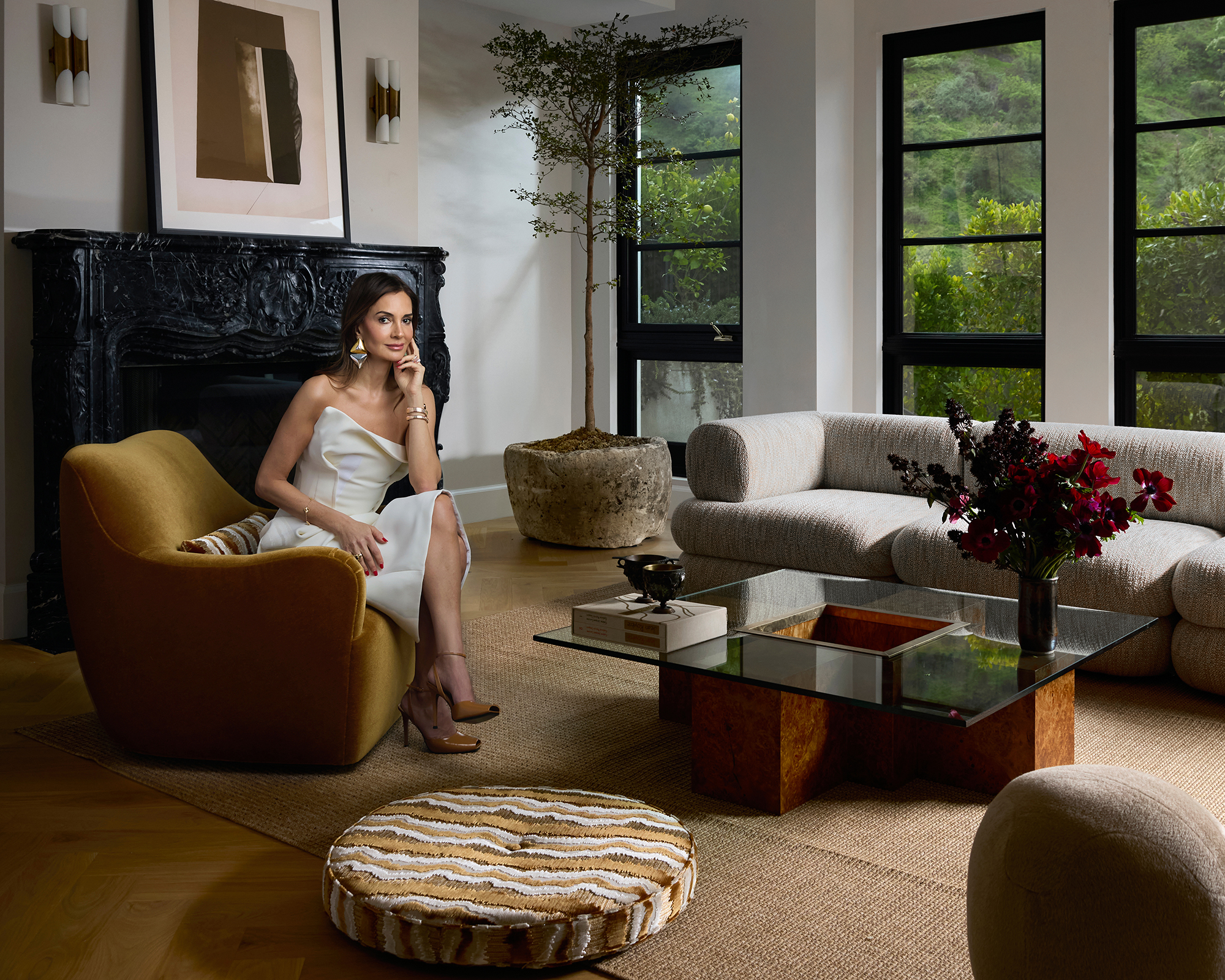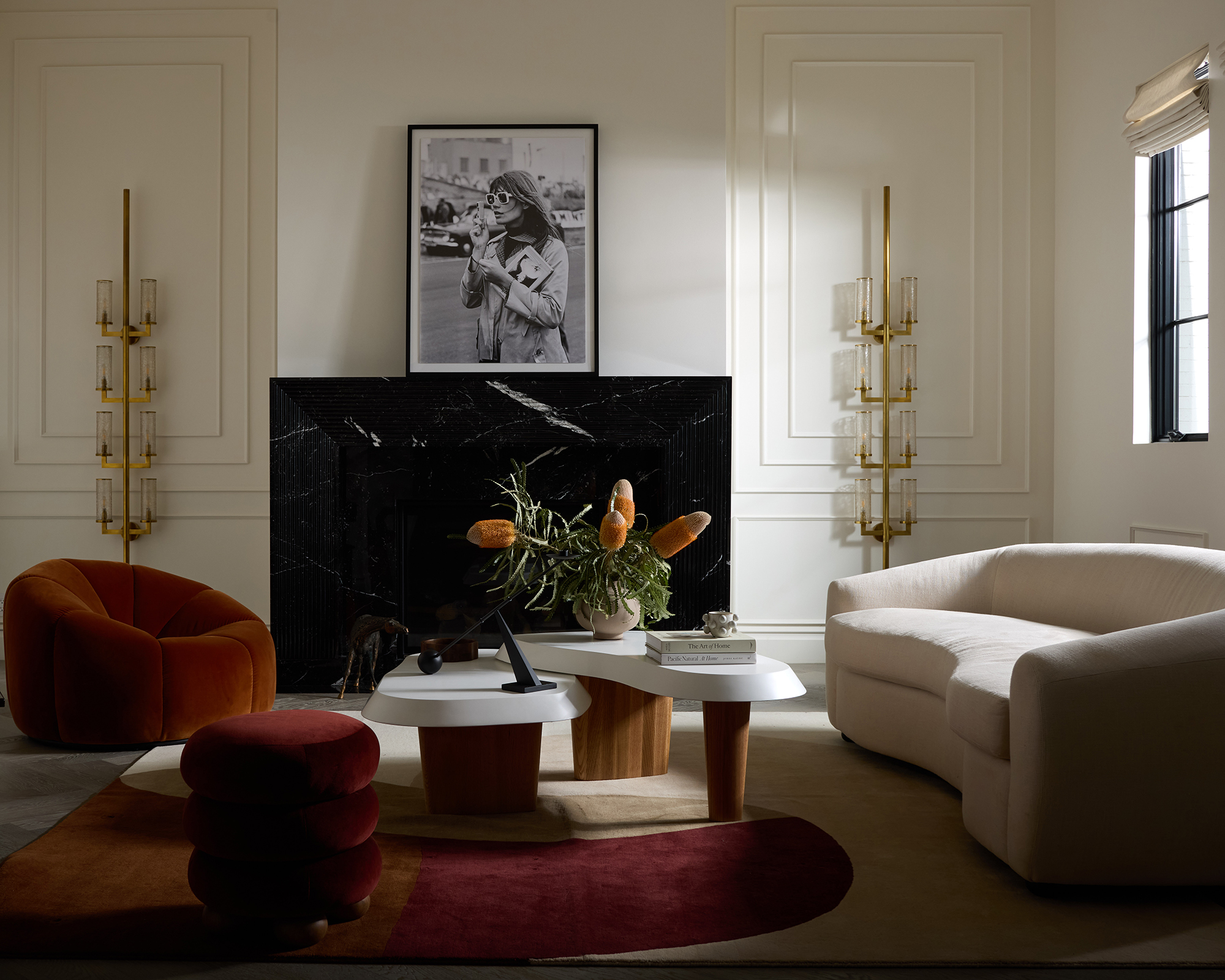
Nina Takesh is a Los Angeles–based interior designer and founder of the eponymous Nina Takesh Design, renowned for creating interiors that marry contemporary elegance with a worldly sensibility. Drawing on her background as co-founder and former CEO of the luxury baby brand Petit Tresor, and her experience designing homes across the U.S. and internationally, Nina has developed a keen instinct for balance, proportion, and sophisticated detailing.
Her work has been featured in leading publications, as well as her own popular YouTube design channel, where she shares behind-the-scenes insights and styling advice. Known for her ability to mix modern lines with vintage pieces and layer textures for depth, she creates spaces that are both visually striking and deeply livable. In this conversation, Nina discusses her design philosophy, the value of storytelling in interiors, and the thoughtful choices that make a home unforgettable.

You’ve developed a distinct aesthetic that blends refinement with warmth. How would you describe your style in your own words?
Refinement and warmth – just about sums it up! I tend to shy away from cool colors and starkness in general. I want people to feel enveloped in warmth, love, and a touch of mystery. Warm tones play beautifully off each other, and I find designing with cool colors can be more challenging.
Mystery is an intriguing word to use about decor! What do you mean by that?
I love it when people enter a home and don’t immediately know what to expect. That’s one reason I’m not a fan of fully open-concept layouts – you get a 360-degree view of the entire home right away, and the element of surprise disappears. A home with pathways into different rooms creates that wow factor, guiding people from one space to the next. It’s a little like exploring – a new world with each room, like being Alice in Wonderland.
What do you do to create that sense of journeying?
Design expertise in your inbox – from inspiring decorating ideas and beautiful celebrity homes to practical gardening advice and shopping round-ups.
Often, in renovations and remodels, we can adjust door openings. In California, ranch-style homes tend to have simple square doors, so we create arches to make them more interesting. That’s also when we consider sightlines – what you see, or don’t see, from certain angles. You don’t want someone to see the toilet through a bathroom door, for example. In one project, we designed a bar area and needed a powder room nearby. To maintain the flow and the sightlines, we used a 'disappearing door' – flush to the wall and covered in wallpaper – so it blended seamlessly into the space. These little details guide the experience and keep the sense of intrigue alive.

You often work with bold silhouettes and sculptural shapes. What draws you to form as a design element?
A lot of it comes from my travels – the camera on my phone is constantly clicking! I just launched a furniture collection, much of which was inspired by details I’ve noticed along the way: an ornamental gate in Italy, a pattern on a woman’s dress, little treasures I find while exploring. Flea markets are my absolute favorite – they’re where I have the most fun hunting for inspiration.
Is there a design decision you find yourself making again and again, no matter the project?
It’s the molding. I work with a very specific blade and proportion at the carpenter’s shop – a distinctly European approach that isn’t so common here in California. I love it because it elevates a room. Sometimes I take it up and over the ceilings, though I always keep some restraint. I also favor lower paneling, especially in dining rooms – it wraps the space in warmth and makes it feel enveloping, almost like the room itself is embracing you.

Are there colors you instinctively return to?
I find myself leaning into rust a lot – we have so many beautiful options in mohair and silk that feel really appealing. I also often return to natural materials like raffia and sisal, which carry that warm oatmeal tone. They’re versatile and work with a mix of styles, offering a way to 'ground' a high-end room. I love juxtaposing the ornate with the everyday – like placing an 18th-century armoire on an IKEA sisal rug. Greens and browns are also staples for me; they’re timeless, like the colors of trees and bark, and they feel endlessly calming.
Sisal and raffia are both very textured – is that another important factor for you when building a room?
Texture is the most important factor. When selecting pieces, layering textures is key – a room can feel very flat without them. That can come from metals, fabrics, rugs, or even wallpaper and plaster. Everything should feel distinct. Now, I’m not suggesting you add 700 textures! At a minimum, I aim for six different textures in a room – glass, marble, mohair, cashmere, wood, and metal. You can layer and un-layer depending on the season, so it doesn’t have to feel heavy; it just needs variation in sheen. I often pair polished finishes with matte ones, which is something I’ve started embracing more recently. Early in my career, I wanted everything to feel perfectly clean and refined, but now I really appreciate the depth that comes from contrast.
Tastes are definitely changing. Do you think people are getting braver with their interiors today?
Absolutely, there are no limits! I love how people are pushing boundaries and experimenting. Clients seem more willing now to embrace bold choices, and they understand that a busy marble can still feel soothing when approached thoughtfully.
Is there a common design mistake you notice people regularly making?
I notice everything – it’s a curse – but one thing that really stands out to me is art placement. If it’s hung too high, I just can’t get past it. In a living room, where the primary activity is sitting on the sofa, art needs to be at eye level. People often think art deserves 'pride of place' higher on the wall, but you want it to be seen properly. I’m happiest when I see attention to detail: good paint, precise caulking, craftsmanship that shows care. Those little details are what truly bring a room together.
See more of Nina Takesh's work at Nina Takesh
Pip Rich is an interiors journalist and editor with 20 years' experience, having written for all of the UK's biggest titles. Most recently, he was the Global Editor in Chief of our sister brand, Livingetc, where he now continues in a consulting role as Executive Editor. Before that, he was acting editor of Homes & Gardens, and has held staff positions at Sunday Times Style, ELLE Decoration, Red and Grazia. He has written three books – his most recent, A New Leaf, looked at the homes of architects who had decorated with house plants. Over his career, he has interviewed pretty much every interior designer working today, soaking up their knowledge and wisdom so as to become an expert himself.

